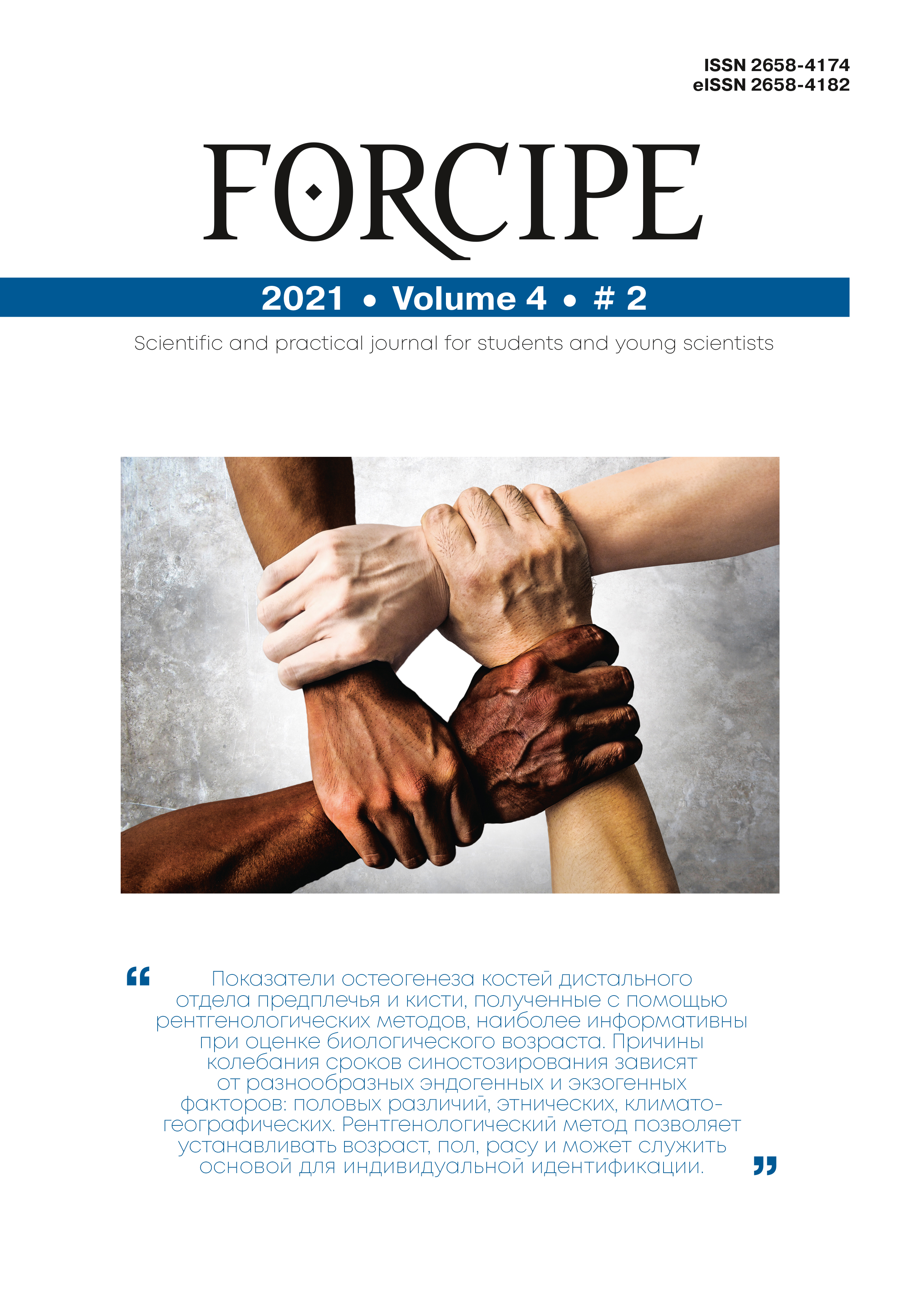STUDY OF OSSIFICATION OF THE DISTAL EPIPHYSES OF THE FOREARM BONES IN FEMALE CHILDREN AND ADOLESCENTS IN WESTERN INDIA
Abstract
Differences in the data on the timing of synostosis of various ethnic groups are due to the influence of endo and exogenous factors on this process. The intensification of migration processes at the beginning of the XXI century actualizes the need to accumulate data on the standards of physical development of children and adolescents of various populations. The objective of this study was to assess the peculiarities of synostosis of the distal epiphyses of the forearm bones in girls in Western India. Were studied 195 radiographs of the right hand in female residents of Mumbai at the age of 6-17 years. The assessment of the stage of synostosiswas carried out according to the classification proposed by B.A. Nikityuk. As a result of the study, it was found that the beginning of the process of ossification in the distal epiphyses of the forearm bones in Indian girls can be seen on radiographs of 6 year old children. At the age from 13 to 15 years, there is an activation of the process of ossification in the distal epiphysis of the ulna. The activation of the process of ossification in the distal epiphysis of the radial bone occurred in two stages. The first was observed from 11 to 12 years old, the second from 13 to 16 years. Completion of synostosis in both distal epiphyses of the forearm bones was observed at the age of 17 years. Thus, the process of bone synostosis is heterochronous in representatives of various ethnic groups, which should be taken into account when assessing the physical development of children.



